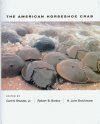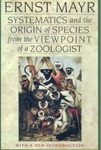Edited By: Carn N Shuster, H Jane Brockmann and Robert B Barlow
427 pages, Col plates, 50 col & 100 line illus
![The American Horseshoe Crab The American Horseshoe Crab]()
Click to have a closer look
About this book
Contents
Customer reviews
Biography
Related titles
About this book
This crab comes ashore on the East Coast in vast numbers to mate and nest. This volume brings together 20 scientists who have worked on all aspects of horseshoe crab biology in the first comprehensive account of the species. Describes the animal's behaviour, natural history and ecology; its anatomy, physiology, distribution, development and life cycle; the puzzle of its immune system; and its management and future conservation.
Contents
Preface Prologue Robert B. Barlow 1. Synchronies in Migration: Shorebirds, Horseshoe Crabs, and Delaware Bay Mark L. Botton and Brian A. Harrington, with Nellie Tsipoura and David Mizrahi Research Note 1.1 Physiological Ecology of Shorebirds during Migration through the Delaware Bay Area Research Note 1.2 The Importance of Weather Systems and Energy Reserves to Migrating Semipalmated Sandpipers 2. Nesting Behavior: A Shoreline Phenomenon H. Jane Brockmann Exhibit 2.1 Questions about Behavior Exhibit 2.2 Decision Making in Animals Exhibit 2.3 Studying Behavioral Adaptations 3. Male Competition and Satellite Behavior H. Jane Brockmann Exhibit 3.1 Language and Explanation in Behavior Exhibit 3.2 The Process of Fertilization Exhibit 3.3 Paternity Analysis in Horseshoe Crabs 4. Seeing at Night and Finding Mates: The Role of Vision Robert B. Barlow and Maureen K. Powers 5. Growing Up Takes about Ten Years and Eighteen Stages Carl N. Shuster, Jr., and Koichi Sekiguchi Exhibit 5.1 Paths Taken: How the Authors Got Started 6. Horseshoe Crabs in a Food Web: Who Eats Whom? Mark L. Botton and Carl N. Shuster, Jr., with John A. Keinath Research Note 6.1 Predation of Horseshoe Crabs by Loggerhead Sea Turtles 7. A History of Skeletal Structure: Clues to Relationships among Species Carl N. Shuster, Jr., and Lyall I. Anderson Exhibit 7.1 Horseshoe Crab Look-Alikes Exhibit 7.2 What Are Horseshoe Crabs? 8. Throughout Geologic Time: Where Have They Lived? Lyall I. Anderson and Carl N. Shuster, Jr. 9. Coping with Environmental Changes: Physiological Challenges David W. Towle and Raymond P. Henry Exhibit 9.1 Cell Volume Regulation or Blood Ion Regulation? Exhibit 9.2 Epithelial Cell Structure and Function Exhibit 9.3 Hemocyanin, the Oxygen-Carrying Protein Exhibit 9.4 Glossary of Terms 10. Diseases and Symbionts: Vulnerability Despite Tough Shells Louis Leibovitz and Gregory A. Lewbart Exhibit 10.1 Dr. Louis Leibovitz Exhibit 10.2 How to Study a Disease Exhibit 10.3 Pathological and Biological Terminology Exhibit 10.4 A Key to the Identification of Diseases of Limulus Exhibit 10.5 Maintaining Limulus in Captivity 11. A Blue Blood: The Circulatory System Carl N. Shuster, Jr. 12. Internal Defense against Pathogenic Invasion: The Immune System Peter B. Armstrong Exhibit 12.1 Glossary 13. Clotting Cells and Limulus Amebocyte Lysate: An Amazing Analytical Tool Jack Levin, H. Donald Hochstein, and Thomas J. Novitsky 14. King Crab Fertilizer: A Once-Thriving Delaware Bay Industry Carl N. Shuster, Jr. 15. Horseshoe Crab Conservation: A Coast-Wide Management Plan Carl N. Shuster, Jr., Mark L. Botton, and Robert E. Loveland Authors and Contributors References Acknowledgments Index
Customer Reviews
Biography
Carl N. Shuster, Jr., is Adjunct Professor of Marine Science, College of William and Mary. H. Jane Brockmann is Professor of Zoology, University of Florida, Gainesville. Robert B. Barlow is Professor of Ophthalmology at the SUNY Upstate Medical University.
Edited By: Carn N Shuster, H Jane Brockmann and Robert B Barlow
427 pages, Col plates, 50 col & 100 line illus
Overall, The American Horseshoe Crab is a fine compendium of information, one I will refer to frequently. The volume also provides an essential tool for anyone involved with developing the regulations that will be required to protect this intriguing species in perpetuity. -- Mark S. Garland Science 20040521 [This] has to be the most thorough book on this amazing creature ever written or ever likely to be written. It is a compilation of essays by some of the crab's foremost researchers...It would be a sad loss if this book were destined merely for reference shelves and university libraries. Each section has its entry point for the novice, its tidbit of fascinating information, ripe for mining by anyone with an inquisitive mind. -- Sandy Bauers Philadelphia Inquirer 20040614 Look inside The American Horseshoe Crab and you'll find everything you ever wanted to know about these living trilobite lookalikes from their much filmed shoreline mating to their historic use as fertiliser. This wonderfully illustrated and detailed compendium of information about the horseshoe or king crab is a must for anyone interested in marine arthropods both fossil and living. -- Douglas Palmer New Scientist 20040911 This book is a superbly produced synthesis of modern knowledge, in 15 chapters written by 20 experts. It is fully illustrated, with 33 colour plates and many line drawings, and there is an extensive bibliography...This scholarly text is essential for all serious students of arthropods. And it is eminently readable, too. -- Euan N. K. Clarkson BBC Wildlife 20041201












![Kabutogani no Nazo: 2 Oku-nen Mae Kara Katachi o Kaezu Iki Tsudzuketa Wake [The Mystery of the Horseshoe Crab: 200 Million Years of Existence without Changing Shape]](http://mediacdn.nhbs.com/jackets/jackets_resizer_medium/24/242122.jpg?height=150&width=99)






![Biology of Horseshoe Crabs Tachypleus tridentatus [Chinese]](http://mediacdn.nhbs.com/jackets/jackets_resizer_medium/22/225884.jpg?height=150&width=103)














